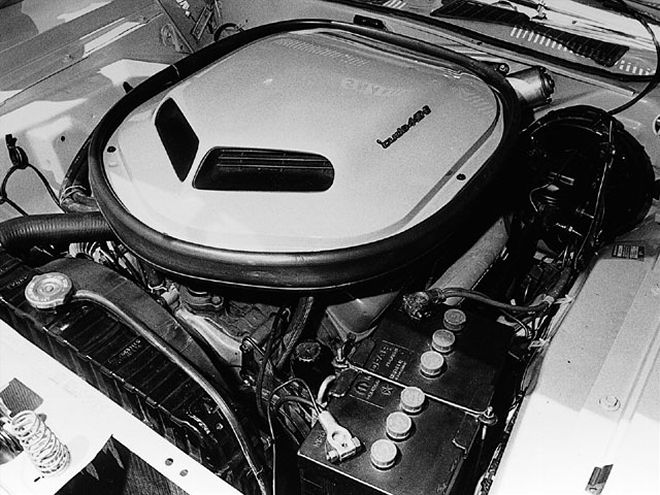

In this issue, we'll look at our disassembled Save the Fish 'Cuda parts and note date-codes as well as part and casting numbers. Roger Gibson Restorations, Year One, and Mr. Norm's Sport Club have teamed up to provide this series of articles on a complete, nut-and-bolt, state-of-the-art Mopar restoration.
These codes will help our restoration in a couple of ways. First, we want to make sure we have the proper components as they relate to the buildsheet and factory specifications. Second, we want to make sure the date-coded components have proper dates that fall within the scheduled production date of the vehicle. The date-coding of parts was and still is the vendors' method of tracking when each part was assembled. This was mandatory for warranty purposes in case of parts failures.
Date-coding has probably become the most difficult task to handle when restoring a Chrysler-manufactured car. Locating a correct part-numbered part is difficult enough, but when the part must be correctly date-coded, this makes the task impossible at times. The proper date-code on a part also commands a higher price. Practically every part on the car has a date-code, whether it's cast, stamped, etched, or inked on.
We all know that a cylinder block is date-coded, but did you know that a starter relay is date-coded, as well as the diodes in your alternator? How about the accelerator cable, brake hoses, oil pressure and water temperature sending units, or the thermostat housing? How about the motor mounts, driveshafts, U-joint straps, hood latches, windshields, voltage regulators, coils, carburetors, and so on? Using our '70 'Cuda, we'll attempt to explain the various types of date-coding used throughout Mopar.
Several different types of date-coding were used during the musclecar era. Some are easy to spot and detect in an easy-to-decipher manner, while others require Month/Day/Year: This close examination and thought to find and recognize them as a date-code. I'll begin with the most conventional date-code method:
Month/Day/Year: This method is used on most cast-iron parts, such as cylinder blocks, cylinder heads, and intake and exhaust manifolds. Example: 8 19 69 = August 19, 1969.
The Month numerals are self-evident as follows: 1 = Jan., 2 = Feb., 3 = March, and so on. The day, on the other hand, isn't used often in the numeral-type date-codes. For instance, windshields and other glass in the car are coded with the Month/Year. Example: 26 = February 1966. The glass code is incorporated into the manufacturers' screen that's etched into each glass. On windshields and rear glasses, this is typically located at the lower middle of the glass. The date-code is typically the lower right-hand set of numbers. On side glasses, it's located in the lower corner of each glass.
Some types of Month/Day/Year date-codes substitute the month numeral with a letter. On many of these types of date-coding, the Day numerals are deleted, leaving only the Month/Year. Typically, A is January, B is February, and so on with the exception of the letter "I," which was deleted most of the time because it could be mistaken for the number "1." Therefore, month alpha codes are as follows:
A = Jan. E = May J = Sept. B = Feb. F = June K = Oct. C = March G = July L = Nov. D = April H = Aug. {{{M}}} = Dec.Other Types Of Date-Coding Used:
*Year/Month Dot Type: Motor Mount Insulator. A year and a series of dots may appear on the rubber. For example, "69...." = fourth month of 1969
*Month/Day: Scheduled Production Date on fender tag and buildsheet, with alpha characters replacing numerals above 9. Therefore, numbers 1-8 correspond normally with January through August. 9 = September, A = October, B = November, and D = December. For example, 1: A12 = October 12 and 408 = April 8th
Conclusion
There is a date "window" on the parts that corresponds with the scheduled production date of the vehicle. It can vary from months before to a day before the build date. In any event, they should always have a date before the scheduled production date. Cars weren't always built on their scheduled date! There may have been parts- supply or paint problems that resulted in the vehicle being built a few days or weeks after the date. If you've noticed more than a few dates on original components that are the same or a little later than the build date, you can assume the vehicle was finished a little later than it was supposed to.
Date-codes are just one of the small details that separate a good restoration from a great one. Sweating over these small things while the car is apart will make it more capable of bringing home the gold time after time. When doing a full-tilt, point-winning restoration, spending the time and energy to do it properly the first time bring both you and future owners of your car immense satisfaction.